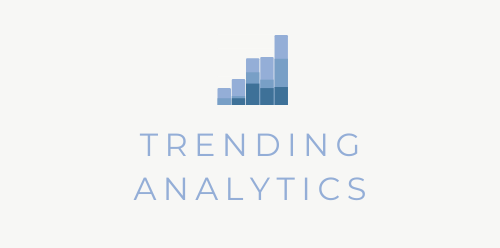Episode 21: Building on your Data Visualization Foundations
In the previous episode, I gave you some suggestions on what a beginner’s data viz curriculum looks like. I have a lot more recommendations for building on the data visualization foundations we talked about and continuing to improve your data viz skills.
You can also listen on Apple Podcasts, Google Podcasts, and Spotify.
What You’ll Learn in this Episode
- Books to build on your foundations
- Practical ways to implement and practice what you have learned
- Next steps
Resources I Recommend on the Episode
- Tableau’s whitepaper on Visual Analytics
- Show Me the Numbers by Stephen Few
- Better Data Visualizations by Jon Schwabish
- The Big Book of Dashboards
- Stephen Few’s Information Dashboard Design: Displaying Data for At-a-Glance Monitoring.
- Alberto Cairo’s books, like The Functional Art followed by The Truthful Art
- Andy Kirk’s Data Visualization: a successful design process
Get in Touch with Hana
Let me know what you think of the episode, you can message at hana@trending-analytics.com or on Instagram @hanalytx.
If you are looking for podcast updates and want additional tips on how to visualize and present data sent straight to your inbox, then make sure to subscribe to my weekly data letters here.
When you hit that subscribe button, I’ll be sliding into your inbox every Wednesday with an email.
Love the show? Why not leave a review?
If you loved this episode of the Art of Communicating Data Podcast, why not leave a review on Apple Podcasts and Spotify?
It only takes 2 minutes and provides me with invaluable insight as to what the listeners think.
If you enjoyed this episode, check out this episode where you learn the data visualization foundation I recommend.
Episode Transcript
In the previous episode, I gave you some suggestions on what a beginner’s data viz curriculum looks like. I have a lot more recommendations for building on the foundations we talked about and continuing to improve your data viz skills. If you are a beginner in data viz or have been dabbling in it, I recommend you listen to that episode first if you haven’t already, it’s the one right before this one, and THEN come back to this episode. If you already know the data viz essentials and want to go beyond the basics, then you can continue listening to this episode. So, you’ll want to make sure you learn visual analytics. It’s a method to explore the data visually by asking different questions and creating different views of the data. By using this method, you’ll see that creating data visualizations is an iterative process and isn’t always the last step of your data project. Because of how easy it is to create charts and copies of charts with data viz tools these days, which wasn’t as easy to do when data vizzes used to be created by hand, there’s no excuse to not learn and implement visual analytics in your process. Trust me, you HAVE the time to do this and it will improve the quality of your work. You can learn more about visual analytics using this whitepaper by Tableau that I will link in the show notes. https://www.tableau.com/learn/whitepapers/why-visual-analytics There are a couple of reference books I have handy for making data visualizations. For understanding more in depth when and why to use certain charts or which charts to avoid, I have 2 book recommendations. Show Me the Numbers by Stephen Few is a great book to read. Better Data Visualizations by Jon Schwabish is my go-to book for referencing different types of charts. If you want to understand the pros and cons of using a certain chart and what better alternatives you could use instead, this can be your source. If you plan on making dashboards, I recommend The Big Book of Dashboards as a handy reference book and Stephen Few’s Information Dashboard Design: Displaying Data for At-a-Glance Monitoring. I also really enjoy Alberto Cairo’s books. These are great if you want to continue diving deep into the world of data visualizations. Cairo’s The Functional Art is good to start with followed by The Truthful Art. In terms of practical application of what you’ve learned: Take an intermediate-level course or read a book on it for the data viz tool you are a beginner in. Actually start creating data visualizations. There are public challenges you can participate in (list all of them and link to blog). You could also look at the work you do in your day job and see where data visualizations can help you or your team. You can also work on personal projects. There are ideas waiting for you in your daily life that you can collect or get data for and start visualizing right away. Some ideas include tracking how much water you drink every day, or your physical activity (especially if you have a smart tracker that can provide you this data), or visualize how much time you spend on various apps. Finally, define and develop a data visualization methodology or workflow. I’ll have another episode on this podcast where I do a book summary of Andy Kirk’s Data Visualization: a successful design process Know there are tons of other resources you can use to continue learning about this topic, so the list I’ve provided you isn’t comprehensive and I encourage you to explore on your own. I have more recommendations on my website trending-analytics.com/list that you can download for free.
